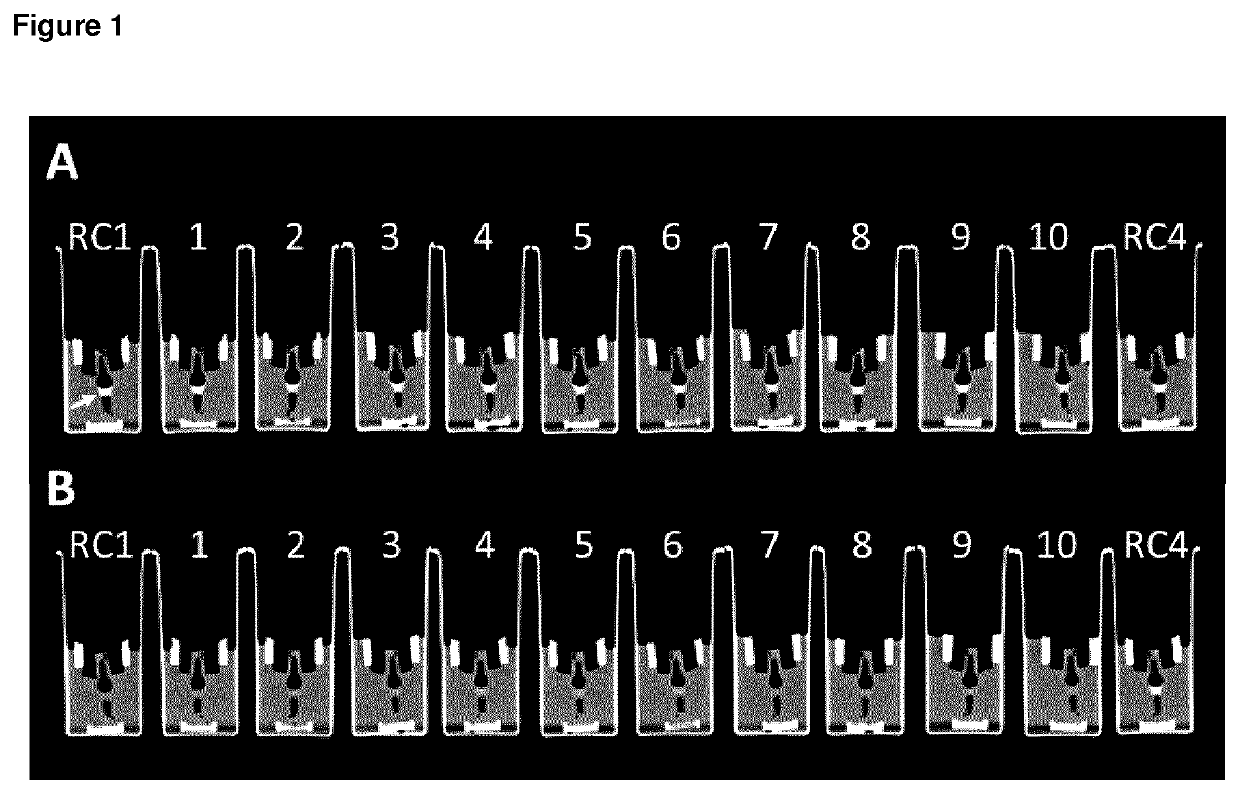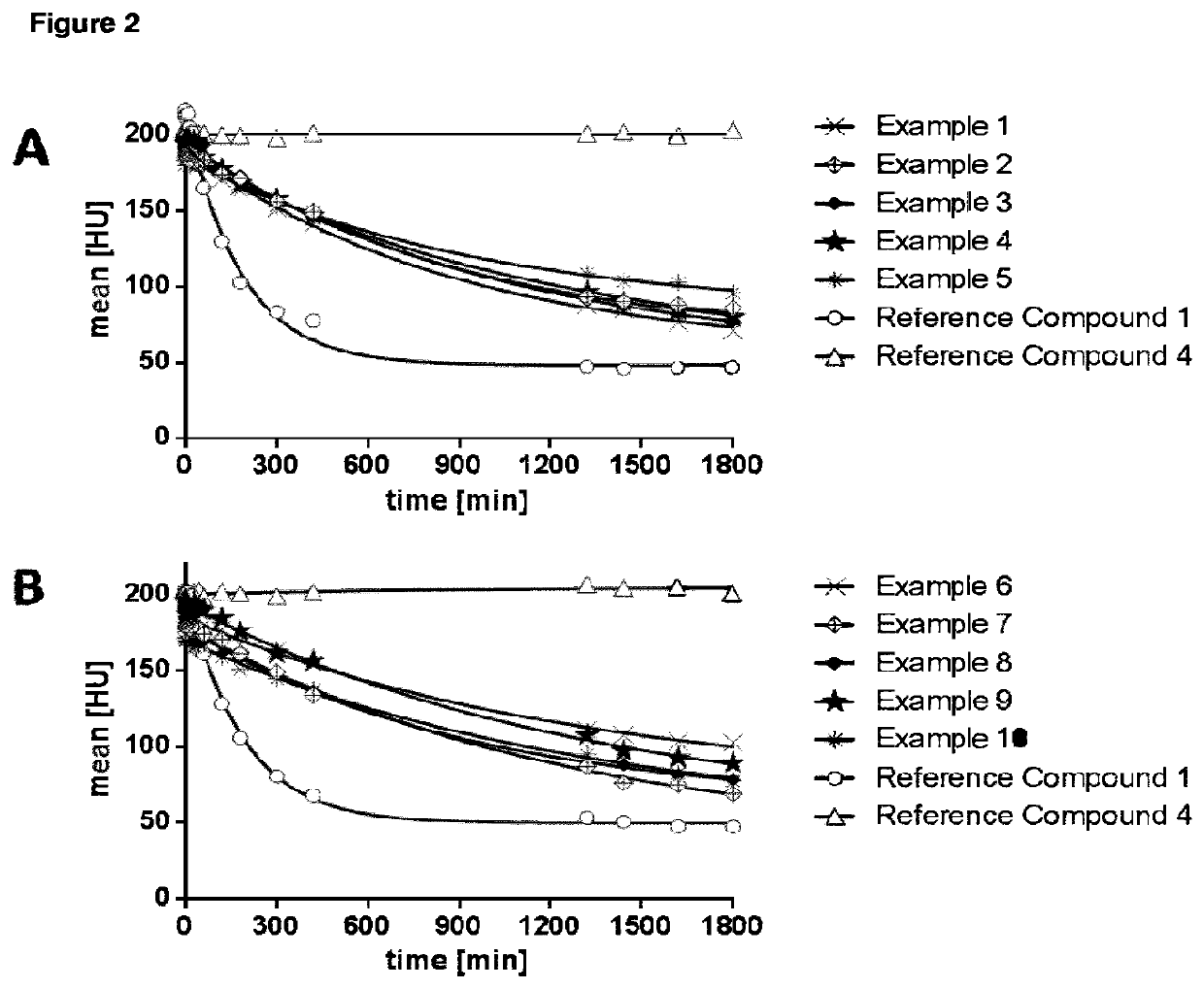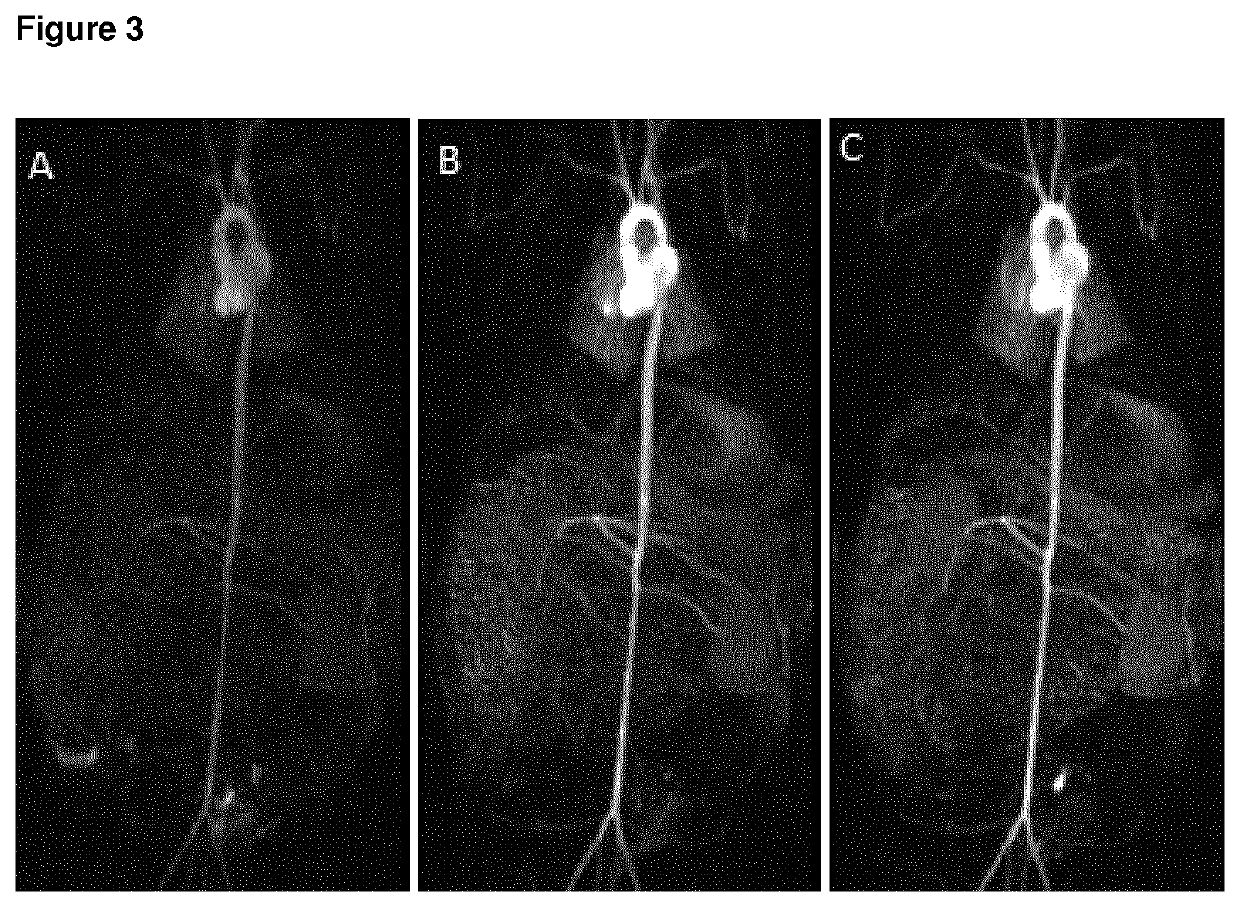High relaxivity gadolinium chelate compounds for use in magnetic resonance imaging
a gadolinium chelate, high-relaxivity technology, applied in the field of new high-relaxivity gadolinium chelate compounds, to achieve the effect of high relaxation
- Summary
- Abstract
- Description
- Claims
- Application Information
AI Technical Summary
Benefits of technology
Problems solved by technology
Method used
Image
Examples
example 1-1
Tert-butyl N-(bromoacetyl)-N-methylglycinate
[0223]
[0224]A stirred suspension of 30.00 g (165.1 mmol, 1 eq.) tert-butyl N-methylglycinate hydrochloride (1:1) and 44.82 g (346.8 mmol, 2.1 eq.) N,N-diisopropyl ethylamine in 250 ml dichloromethane was cooled to −70° C. After slow addition of 35.67 g (176.7 mmol, 1.07 eq.) bromoacetyl bromide, dissolved in 70 ml dichloromethane, the reaction mixture was warmed over night to room temperature. The organic layer was washed twice with 0.1 M aqueous hydrochloric acid, with saturated aqueous sodium bicarbonate solution and with half saturated sodium chloride solution. After drying over sodium sulfate, the solvent was evaporated under reduced pressure yielding 34.62 g (79%, 130.1 mmol) of the title compound.
[0225]1H-NMR (400 MHz, DMSO-d6): δ=1.36-1.47 (m, 9H), 2.80-3.08 (m, 3H), 3.94-4.47 (m, 4H) ppm.
[0226]LC-MS (ES+): m / z=266.1 and 268.1 (M+H)+; Rt=0.91 and 0.94 min.
example 1-2
Tert-butyl N-methyl-N-{[4,7,10-tris(2-tert-butoxy-2-oxoethyl)-1,4,7,10-tetraazacyclo-dodecan-1-yl]acetyl}glycinate
[0227]
[0228]To a solution of 6.98 g (13.56 mmol, 1 eq.) tri-tert-butyl 2,2′,2″-(1,4,7,10-tetraazacyclododecane-1,4,7-triyl)triacetate {CAS No. [122555-91-3]; see B. Jagadish et al., THL 52(17), 2058-2061 (2011)} in 175 ml acetonitrile were added 5.62 g (40.69 mmol, 3 eq.) potassium carbonate and 3.80 g (13.56 mmol, 1 eq.) tert-butyl N-(bromoacetyl)-N-methylglycinate (example 1-1). The resulting reaction mixture was stirred over night at 60° C. After filtration, the solution was evaporated under reduced pressure to dryness. The residue was purified by chromatography yielding 6.63 g (70%, 9.48 mmol) of the title compound.
[0229]1H-NMR (400 MHz, CDCl3): δ=1.38-1.50 (m, 36H), 1.90-4.00 (m, 29H) ppm.
[0230]LC-MS (ES+): m / z=700.5 (M+H)+; Rt=1.01 min.
example 1-3
N-methyl-N-{[4,7,10-tris(carboxymethyl)-1,4,7,10-tetraazacyclododecan-1-yl]acetyl}-glycine
[0231]
[0232]12.29 g (17.56 mmol) Tert-butyl N-methyl-N-{[4,7,10-tris(2-tert-butoxy-2-oxoethyl)-1,4,7,10-tetraazacyclododecan-1-yl]acetyl}glycinate (example 1-2) were dissolved in 300 ml formic acid. The solution was stirred for two hours at 80° C. After evaporation under reduced pressure, the residue was dissolved in 600 ml water and was washed repeatedly with dichloromethane. The aqueous layer was dried by lyophilization yielding 8.04 g (96%, 16.90 mmol) of the title compound.
[0233]1H-NMR (400 MHz, D2O): δ=2.81-2.94 (m, 3H), 2.95-4.05 (m, 26H) ppm.
[0234]LC-MS (ES+): m / z=476.2 (M+H)+; Rt=0.22 min.
PUM
| Property | Measurement | Unit |
|---|---|---|
| temperature | aaaaa | aaaaa |
| temperature | aaaaa | aaaaa |
| temperature | aaaaa | aaaaa |
Abstract
Description
Claims
Application Information
 Login to View More
Login to View More - R&D Engineer
- R&D Manager
- IP Professional
- Industry Leading Data Capabilities
- Powerful AI technology
- Patent DNA Extraction
Browse by: Latest US Patents, China's latest patents, Technical Efficacy Thesaurus, Application Domain, Technology Topic, Popular Technical Reports.
© 2024 PatSnap. All rights reserved.Legal|Privacy policy|Modern Slavery Act Transparency Statement|Sitemap|About US| Contact US: help@patsnap.com










